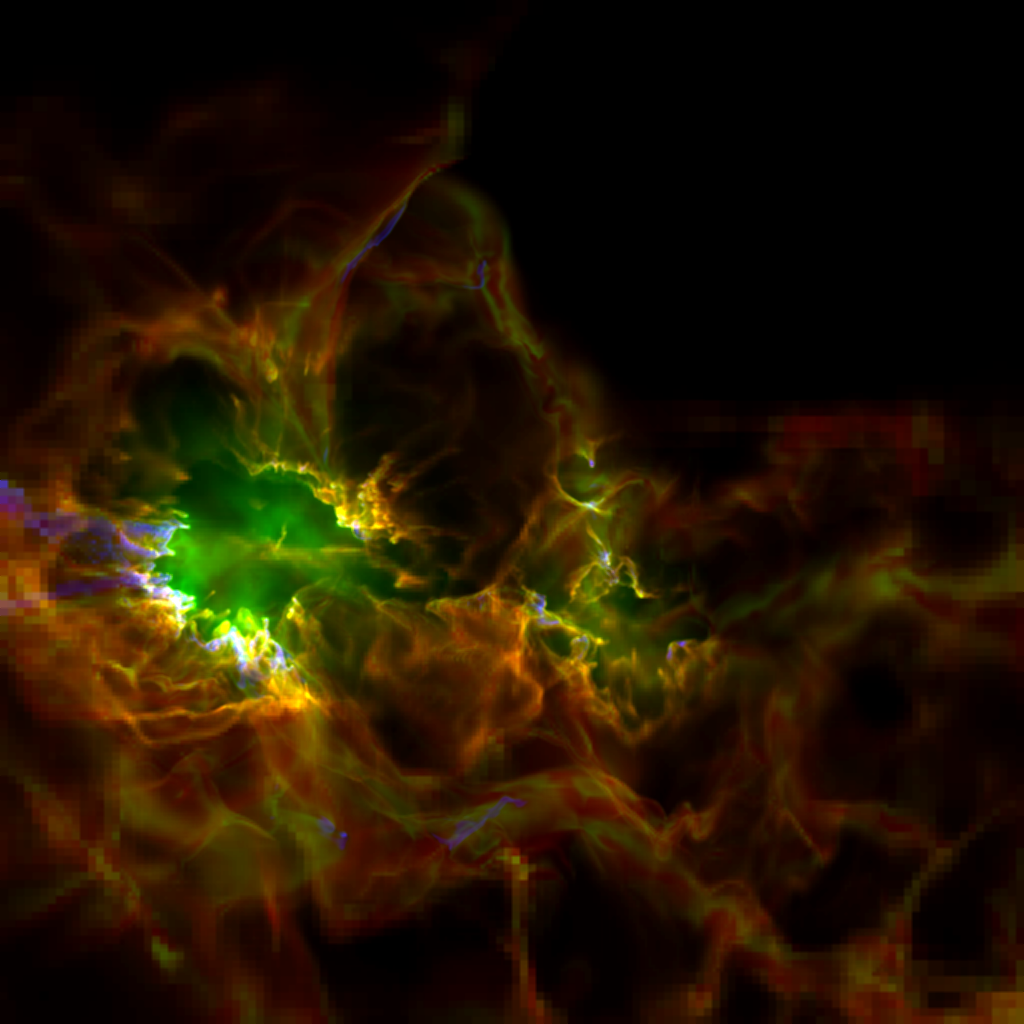Star formation and feedback in molecular clouds
Prof. Stefanie WalchWithin the SILCC-Zoom project, we study the early impact of ionizing radiation on forming molecular clouds. In Haid et al. (2019) we present our first sub-parsec resolution radiation-hydrodynamic simulations of two molecular clouds self-consistently forming from a turbulent, multiphase ISM. The clouds have similar initial masses of few $10^4$ $M_{\odot}$, escape velocities of $\sim 5$ $km$ $s^{-1}$, and a similar initial energy budget. We follow the formation of star clusters with a sink-based model and the impact of radiation from individual massive stars with the tree-based radiation transfer module TREERAY (Wünsch et al., in prep., and Wünsch et al., 2018, MNRAS, 475, 3393). Photoionizing radiation is coupled to a chemical network to follow gas heating, cooling, and molecule formation and dissociation. For the first 3 Myr of cloud evolution, we find that the overall star formation efficiency is considerably reduced by a factor of ˜4 to global cloud values of $ \lt 10$ percent as the mass accretion of sinks that host massive stars is terminated after $\leq 1$ Myr. Despite the low efficiency, star formation is triggered across the clouds. Therefore, a much larger region of the cloud is affected by radiation and the clouds begin to disperse. The time-scale on which the clouds are dispersed sensitively depends on the cloud sub-structure and in particular on the amount of gas at high visual extinction. The damage of radiation done to the highly shielded cloud is delayed. We also show that the radiation input can sustain the thermal and kinetic energy of the clouds at a constant level. Our results strongly support the importance of ionizing radiation from massive stars for explaining the low-observed star formation efficiency of molecular clouds.
